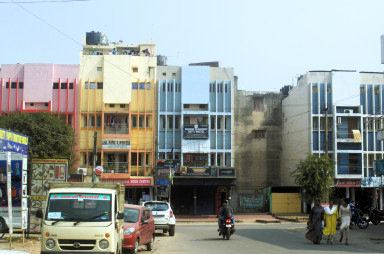From working-class cultivation to non-commercialized social interactions: The evolving social role of modernist public spaces in an industrial city of India [forthcoming]
In: Contingencies in Urban Future-Making: Pitfalls, Potentialities, and Transformative Practices, Editors: Joachim Thiel, Monika Grubbauer, Lucas Pohl
The book chapter examines the contemporary social impact of the built environment conceived and constructed during the 1960s and 1970s in India – the country’s first decades of independence – through an in-depth case study of Bokaro Steel City, the Indian ‘temple of modernity’. I focus on cultural and leisure spaces that were originally designed to be accessible to all and argue that today they serve as affordable alternatives to recently built neoliberal, consumption-oriented public arenas that exclude those unable to spend money to be in such spaces. In an urban landscape where culture and leisure are increasingly commodified, these older public spaces demonstrate that culture can exist as a public good, accessible without monetary expenditure. Far from being relics of the past, the historical public spaces remain a vital part of today’s social urban landscape.
